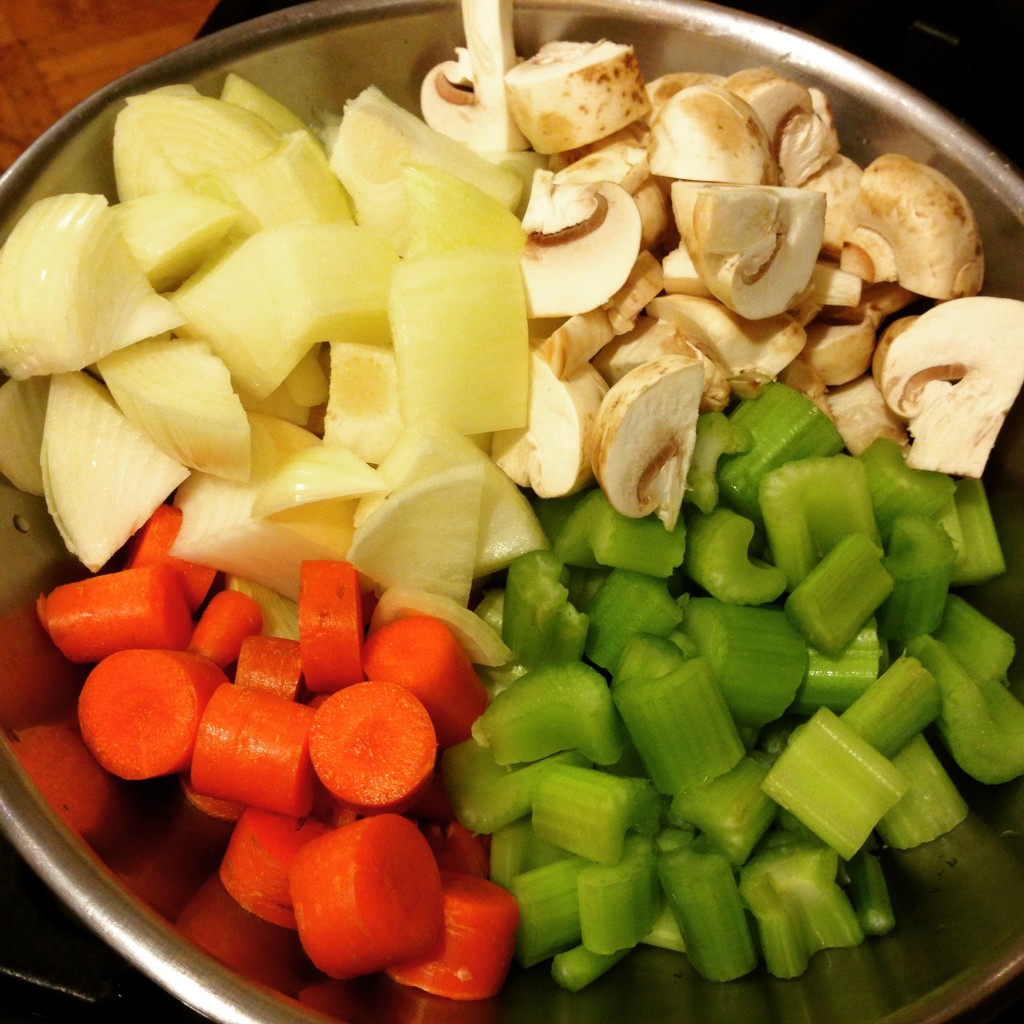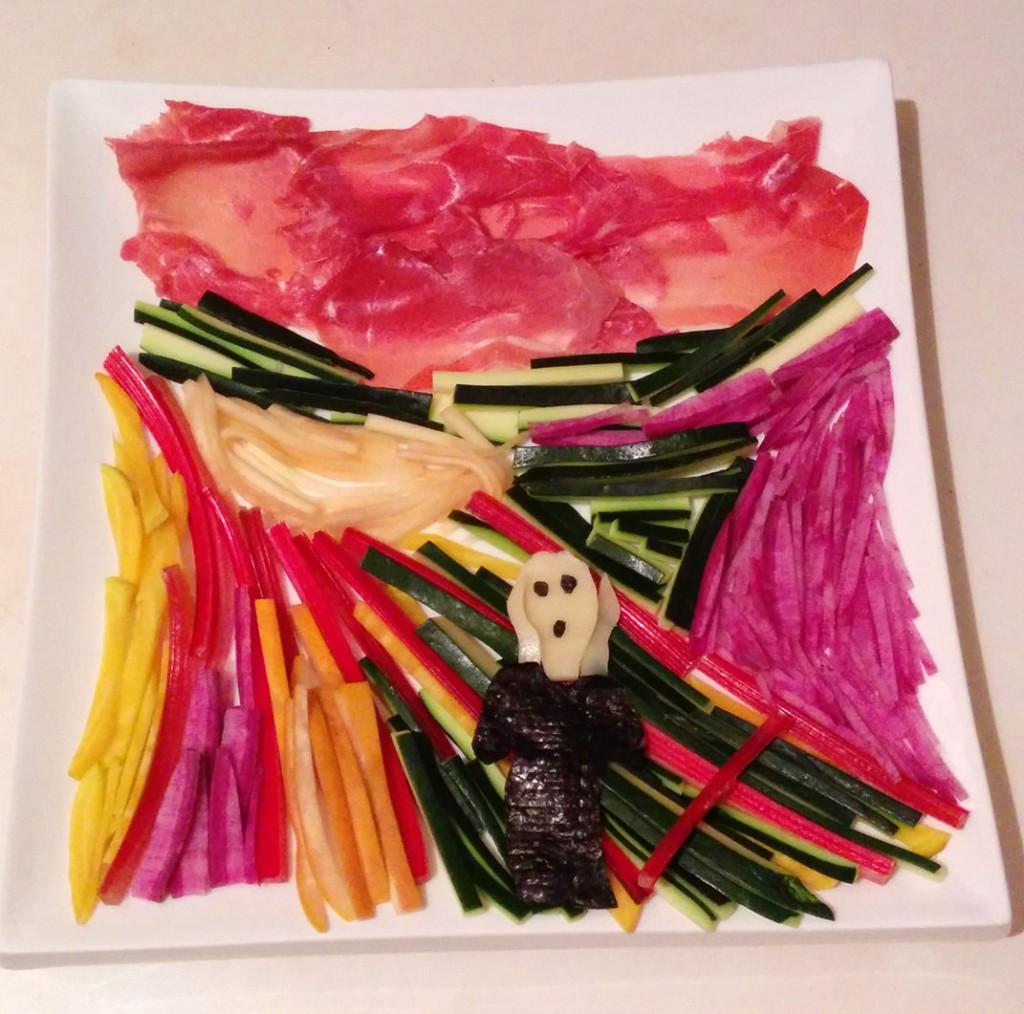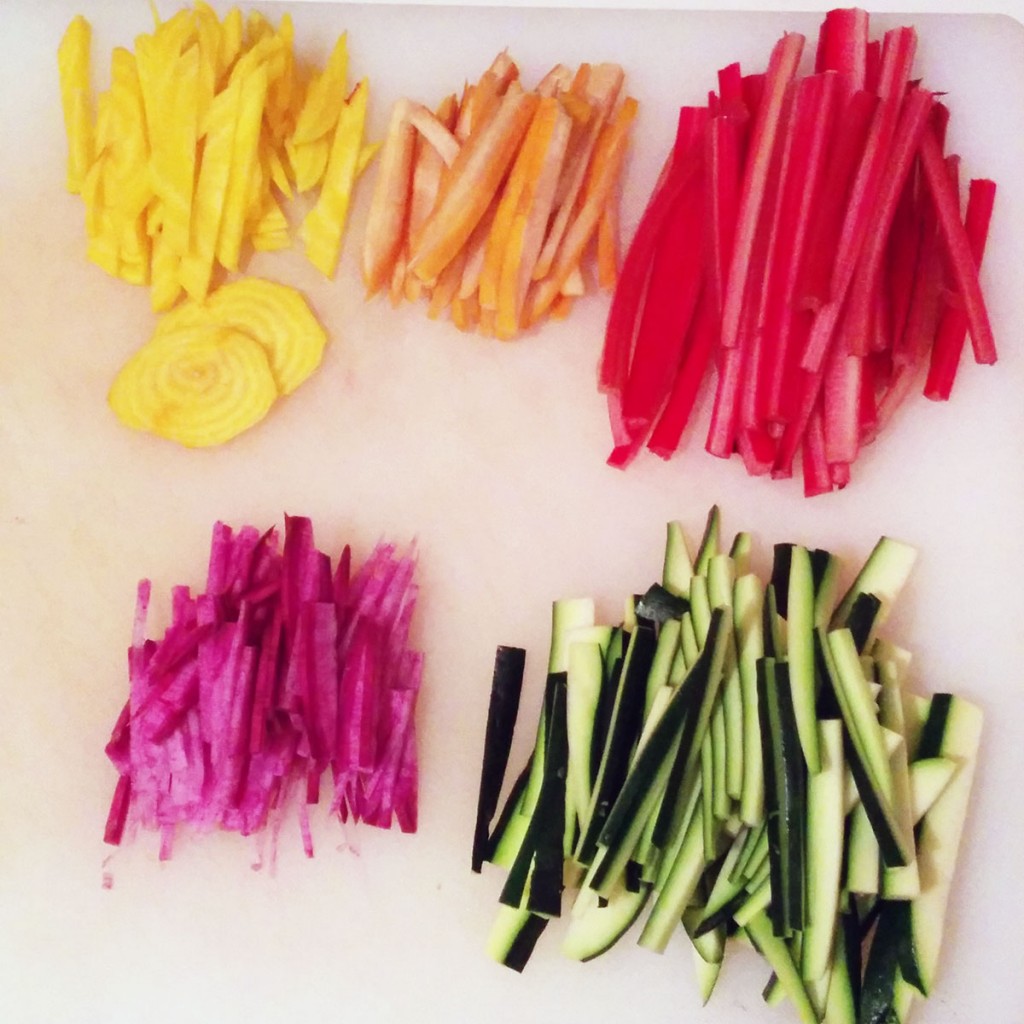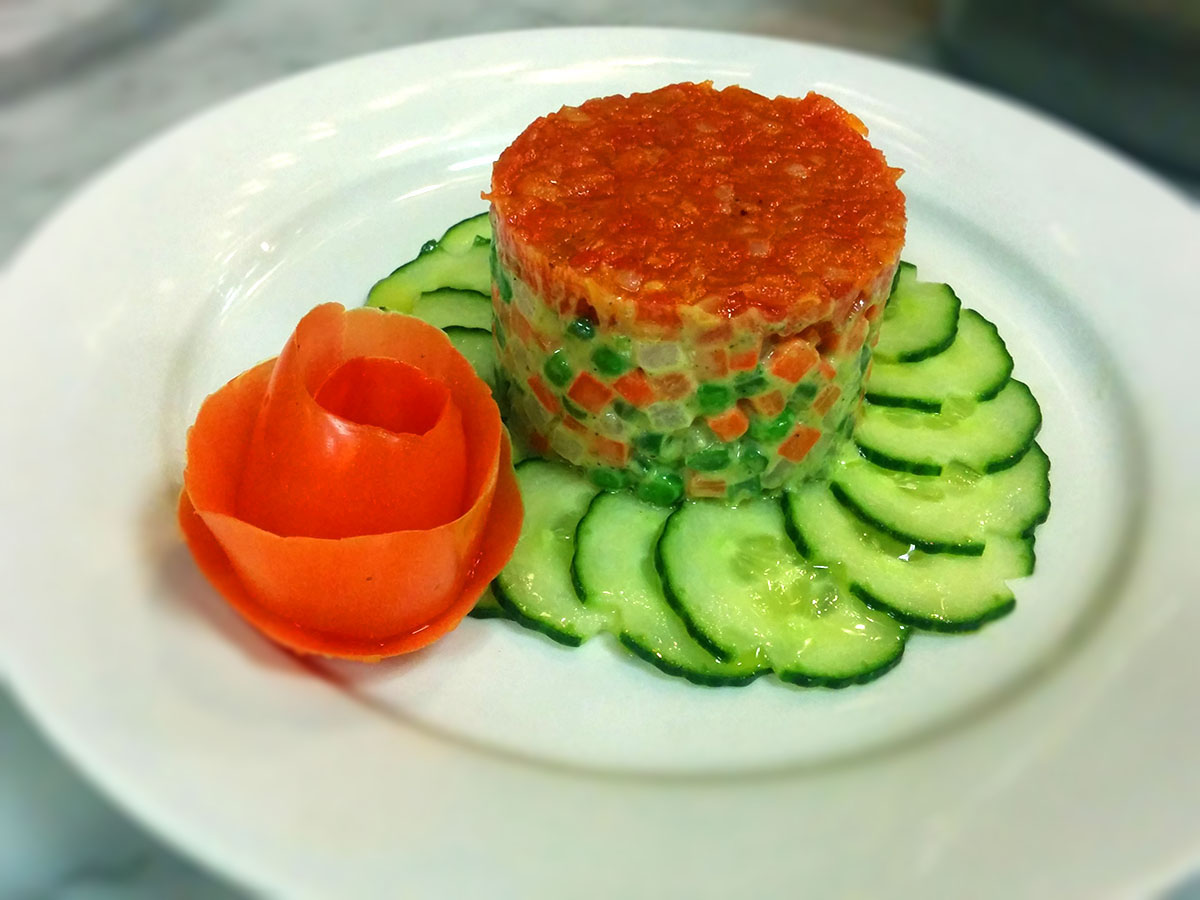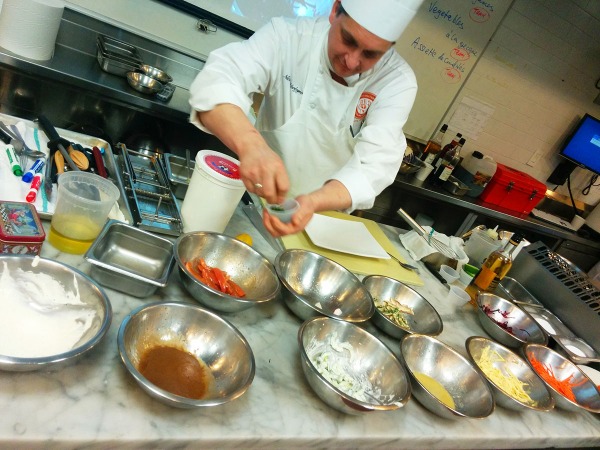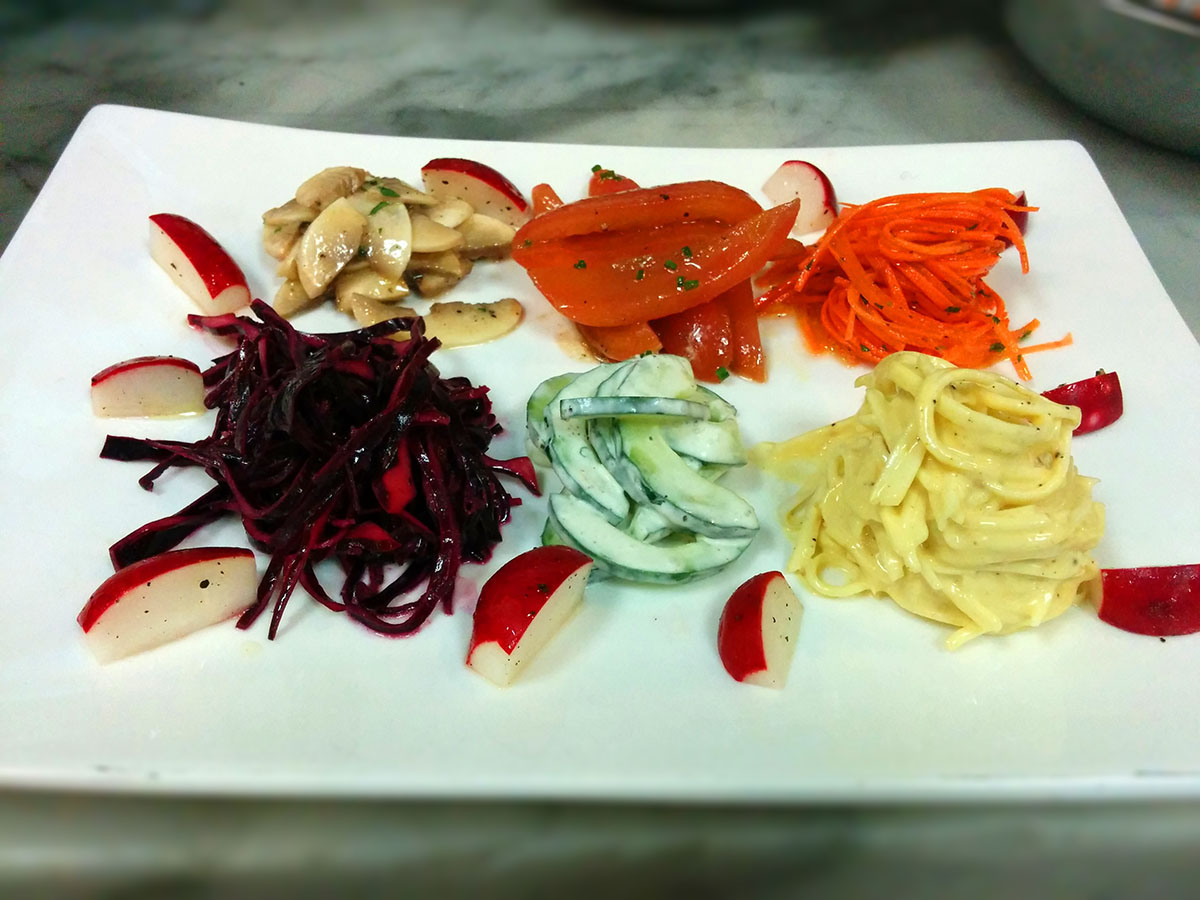
So, what’s it like to go from an oyster slurping, pork braising, cheese grating, cream swilling chef and eater to one that’s not?
It’s incredibly easy and hard at the same time.
For the most part, V-month was FABULOUS. Much better than the time I tried to drink Soylent for a week. Unlike Soylent week, which was mindnumbingly boring, I’ve had tons of room to experiment with new foods and flavors.
I’ve concluded that it’s best to understand vegan food as vegetable, fruit and grain based dishes, not meat or cheese imitations. For the most part, vegan alternatives are invariably not the same as the original, and this leads people to be uncomfortable about “weird” textures and flavors. We go down the wrong path when we tell people “you won’t miss X, you’ll love this (can’t possibly be the same as the original) vegan version instead!” The dish might be good on its own merits, but I can’t help comparing it to what I’ve had before. But when I don’t try to mimic meat dishes, there are no voices in my head trying to compare what I’m eating to something else. In other words, it’s better to get pizza without cheese than pizza with soy cheese, so that you can divorce yourself from your prior expectations. I’ve tried two kinds of vegan cream cheese so far, and while they were fine, mentally I never really got over that they weren’t the same as cream cheese. So I switched to just using hummus or peanut butter on my bagels.
On my own, I can stick to a vegan diet relatively easily. However, external pressures and social obligations complicate matters. On one occasion, I ended up at a bar near Penn Station for dinner, and pretty much the only thing I could eat was French fries and beer. (Wait, I guess that’s not really a problem.) It’s also awkward to say no when people offer me food. After a good friend made red-wine braised oxtail for dinner and invited me over, I had to say no. As someone who often gives food as a sign of care and affection, it feels terrible to turn down someone else’s offering, especially if it’s homemade. I told people at the beginning of the month that I was trying a vegan diet, but no one really remembered. For this particular dinner party, I ended up bringing my own food, which was a good compromise but I was lucky that I’d cooked ahead of time.
For the first time, I also have to read food labels carefully. It gives me a sense of what it’d be like to have a food allergy. Is that milk in the frozen naan? Why on earth would you put milk powder in gluten-free flour?

What have you been cooking?
Lots of things! There’s the usual assortment of grain salads, beans and vegetable sides, but for me, the easiest jumping point is to cook Asian food, which is generally dairy-free already, and easy to make vegetarian. I loved these recipes for mushroom mapo tofu and braised eggplant with tofu. I also made time for vegan desserts (who says vegan means healthy?) and had a blast with this chocolate cake and these carrot cake cookies.
The seemingly Sisyphean task that I wanted to accomplish was to create a good vegan cheese sauce (read: one indistinguishable from your average cheddar sauce). I’ve been experimenting with a bunch of vegan cheese sauce recipes, and honestly, none of them are great when I compare them to actual cheese sauce. This recipe for vegan mac & cheese left me wrinkling my nose initially. However, if I tried to think of it as pasta tossed with butternut squash and creamed cashew sauce, then that changed matters entirely and I could enjoy it on its own merits.
One unexpected perk was that I could now swap food with vegan and veg-inclined friends, who tend to cook a fair amount out of necessity. I usually cook in massive batches over the weekend and end up eating the same thing for days afterwards. Suddenly I had more people to swap food with, and that was a nice communal experience.
Continue reading What’s It Like to Be a (Temporary) Vegan?
